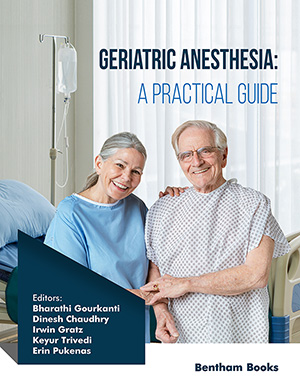Abstract
Background: Surfactant application by a thin catheter represented by the term less invasive surfactant administration (LISA) for respiratory distress syndrome in spontaneously breathing preterm infants was developed as an alternative to endotracheal intubation.
Methods: We conducted a meta-analysis to assess the effects of LISA when compared to the socalled intubation-surfactant-extubation (INSURE) and the standard endotracheal intubation and mechanical ventilation (MV). The primary outcome was the composite incidence of death or bronchopulmonary dysplasia at a postmenstrual age of 36 weeks. The secondary outcome was the composite incidence of seven other severe adverse events. On 06 October 2021, we searched randomized clinical trials (RCTs) in PubMed, the Cochrane Library, ClinicalTrials.gov, and the ICTRP Registry.
Results: We included 18 RCTs. The pooled data on the primary outcome favored LISA when compared to either INSURE (risk ratio 0.67; 95% CI, 0.51 to 0.88) or MV (risk ratio 0.78; 95% CI, 0.61 to 0.99). The pooled data on the second outcome also favored LISA when compared to INSURE (risk ratio 0.75; 95% CI, 0.60 to 0.94) and MV (risk ratio 0.73; 95% CI, 0.55 to 0.96).
Conclusion: The findings showed that surfactant application by non-intubation respiratory support and the use of a thin catheter may decrease the composite risk of death or bronchopulmonary dysplasia. The included data support the view that LISA should be considered the preferred treatment option in eligible infants.
Keywords: Infant, premature, pulmonary surfactants, respiratory distress syndrome, bronchopulmonary dysplasia, systematic review, meta-analysis.
[http://dx.doi.org/10.1001/archpedi.1959.02070010519001] [PMID: 13649082]
[http://dx.doi.org/10.1055/s-0028-1085066] [PMID: 18773379]
[PMID: 26270610]
[http://dx.doi.org/10.1164/ajrccm.163.7.2011060] [PMID: 11401896]
[http://dx.doi.org/10.1542/peds.2005-0249] [PMID: 16322158]
[http://dx.doi.org/10.1097/MOP.0000000000000878] [PMID: 32068592]
[http://dx.doi.org/10.1371/journal.pmed.1000097] [PMID: 19621072]
[http://dx.doi.org/10.1016/S0022-3476(78)80282-0] [PMID: 305471]
[http://dx.doi.org/10.1097/00000658-197801000-00001] [PMID: 413500]
[http://dx.doi.org/10.1001/archopht.123.7.991] [PMID: 16009843]
[http://dx.doi.org/10.1136/bmj.327.7414.557] [PMID: 12958120]
[http://dx.doi.org/10.1136/bmj.315.7109.629] [PMID: 9310563]
[http://dx.doi.org/10.1016/j.jclinepi.2005.01.006] [PMID: 16085192]
[http://dx.doi.org/10.1186/s12887-015-0342-7] [PMID: 25885964]
[http://dx.doi.org/10.4103/jcn.JCN_32_19]
[http://dx.doi.org/10.22038/IJN.2018.30057.1408]
[http://dx.doi.org/10.1016/S0140-6736(11)60986-0] [PMID: 21963186]
[http://dx.doi.org/10.1007/s00431-020-03682-9] [PMID: 32462483]
[http://dx.doi.org/10.29271/jcpsp.2019.03.226] [PMID: 30823947]
[http://dx.doi.org/10.3389/fped.2020.00182] [PMID: 32457854]
[http://dx.doi.org/10.1002/ppul.24479] [PMID: 31424177]
[http://dx.doi.org/10.1542/peds.2012-0603] [PMID: 23359581]
[http://dx.doi.org/10.1001/jamapediatrics.2015.0504] [PMID: 26053341]
[http://dx.doi.org/10.1007/s11596-016-1665-9] [PMID: 27924521]
[http://dx.doi.org/10.12816/0002647]
[http://dx.doi.org/10.4103/2279-042X.150053] [PMID: 25710048]
[http://dx.doi.org/10.5812/compreped.60724]
[http://dx.doi.org/10.1093/tropej/fmab086]
[http://dx.doi.org/10.3345/cep.2021.00297]
[http://dx.doi.org/10.1097/MD.0000000000019216] [PMID: 32118723]
[http://dx.doi.org/10.1007/s00431-016-2785-8] [PMID: 27744567]
[http://dx.doi.org/10.1186/1471-2431-14-213] [PMID: 25164872]
[http://dx.doi.org/10.1136/bmjopen-2020-038343] [PMID: 33483435]
[http://dx.doi.org/10.1186/s13063-020-04390-3] [PMID: 32527290]
[http://dx.doi.org/10.1371/10.1002/14651858.CD011672.pub2] [PMID: 33970483]
[http://dx.doi.org/10.1136/archdischild-2015-310299] [PMID: 27852668]
[http://dx.doi.org/10.1001/jama.2016.10708] [PMID: 27532916]
[http://dx.doi.org/10.1111/apa.15374] [PMID: 32441829]
[http://dx.doi.org/10.1007/s00431-016-2789-4] [PMID: 27678511]
[http://dx.doi.org/10.1002/ppul.25545] [PMID: 34215018]
[http://dx.doi.org/10.1371/journal.pmed.1000251] [PMID: 20352064]
[http://dx.doi.org/10.1136/archdischild-2018-315015] [PMID: 30068669]
[http://dx.doi.org/10.1093/pch/pxx033] [PMID: 29479196]
[http://dx.doi.org/10.1093/pch/pxaa116] [PMID: 33552321]
[http://dx.doi.org/10.1007/s00431-016-2812-9] [PMID: 27942865]
[http://dx.doi.org/10.1038/s41372-018-0302-9] [PMID: 30635595]
[http://dx.doi.org/10.1007/s00431-020-03572-0] [PMID: 32067100]
[http://dx.doi.org/10.1111/apa.15565] [PMID: 32892376]































